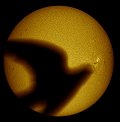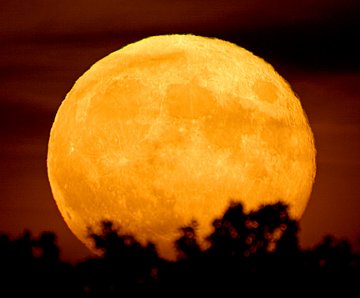 Would you like a call when auroras are brewing over your hometown? Sign up for SpaceWeather PHONE.
Would you like a call when auroras are brewing over your hometown? Sign up for SpaceWeather PHONE.
SUNSPOT 798: Hyperactive sunspot 798, which unleashed nine X-class solar flares this month, including a colossal X17-flare on Sept. 7th, is breaking up. But it might not go quietly. NOAA forecasters say there's a 20% chance of more X-flares during the next 24 hours.
 By mid-week, however, the whole episode of sunspot 798 should come to an end. The sun's rotation is about to carry the active region over the western limb where it will disappear from view. Then, finally, the chance of Earth-directed flares will drop to zero.
By mid-week, however, the whole episode of sunspot 798 should come to an end. The sun's rotation is about to carry the active region over the western limb where it will disappear from view. Then, finally, the chance of Earth-directed flares will drop to zero.
Right: On Sept. 17th, Didier Favre of Los Angeles, CA, was photographing sunspot 798 when a passing bird tried to steal the show. "Catch the sunspot if you can!" says Favre.
September 2005 Aurora Gallery
RED MOON, RED MARS: 9-1-1, the moon is on fire! Onlookers might have thought so when the moon popped up over Stuttgart, Germany, on Sept. 18th. The Harvest Moon was positively fiery, as shown in this picture from German astronomer Stefan Seip:

The source of the moon's color is Earth. Our planet's thick dusty atmosphere scatters moonlight, particularly near the horizon, turning the low-hanging moon vivid shades of red.
On Wednesday night, Sept. 21st, you might be able to see two red things rising in the east: the moon and Mars. Look for them side-by-side around 10 p.m. local time: sky map.
Note: As the red moon rises, it eventually subsides to white. Mars, however, does not alter. It is genuinely red.
more images: from Steve Irvine near Owen Sound, Ontario, Canada; from Michiel de Boer of the Netherlands; from Mike O'Leary of El Cajon, CA; from Peter Lawrence of Selsey, West Sussex, UK.

